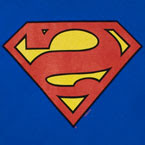 gatekeeper issue,’ she said. ‘We simply publish too many books. We need more midlist novels and less of the celebrity books that challenge the bottomline of publishing conglomerates. The supply chain is broken. In the 20th century you got books to distributors and they got books into stores, and reps from publishers into stores telling buyers what to order... that doesn’t work anymore. The more you publish, the more overwhelming it is, and you need somebody to help you through the morass of choices.’
gatekeeper issue,’ she said. ‘We simply publish too many books. We need more midlist novels and less of the celebrity books that challenge the bottomline of publishing conglomerates. The supply chain is broken. In the 20th century you got books to distributors and they got books into stores, and reps from publishers into stores telling buyers what to order... that doesn’t work anymore. The more you publish, the more overwhelming it is, and you need somebody to help you through the morass of choices.’One audience member commented that because of the economic structure and relatively low price of e-books, ‘writers are then screwed.’ Richard Nash, former head of Soft Skull Press, responded, ‘No, that is not true. Printing accounts for 12% of production cost, thus there is actually more of the pie for the writer to get.’
Let’s take a minute to investigate this claim. Assuming that what Nash said is accurate, one would expect that the difference between the print version of a book and the Kindle copy would be 12%, leaving out that he price may be artificially low in order to encourage buyers. This week, Colson Whitehead has brought out a new novel called Sag Harbor that is priced at $24.95. The Kindle version on Amazon is only $9.99, a difference of about 60%. Yet Amazon offers the book at $14.97, a difference between the Kindle version of only 20% from the actual price. So on the surface, Nash’s assertion would appear to be true, even though an author's actual share is probably about a nickel or so.
In this world, citation will become as powerful a sales engine as promotion is today. An author will write an arresting description of Thomas Edison's controversial invention of the light bulb, and thanks to hundreds of inbound links from book-bloggers quoting the passage, those pages will rise to the top of Google's results for anyone searching ‘invention of light bulb.’ Each day, Google will deposit a hundred potential book buyers on that page, eager for information about Edison's breakthrough. Those hundred readers might pale compared with the tens of thousands of prospective buyers an author gets from an NPR appearance, but that Google ranking doesn't fade away overnight. It becomes a kind of permanent annuity for the author.
For nonfiction and short-story collections, a la carte pricing will emerge, as it has in the marketplace for digital music. Readers will have the option to purchase a chapter for 99 cents, the same way they now buy an individual song on iTunes. The marketplace will start to reward modular books that can be intelligibly split into standalone chapters.
This fragmentation sounds unnerving -- yet another blow to the deep-focus linearity of the print-book tradition. Breaking the book into detachable parts may sell more books, but there are certain kinds of experiences and arguments that can only be conveyed by the steady, directed immersion that a 400-page book gives you. A playlist of the best chapters from Middlemarch, Gravity's Rainbow and Beloved will never work the way a playlist of songs culled from different albums does today. Nor will many sustained nonfiction arguments like Thomas L. Friedman’s The World is Flat or biographies like David Michaelis’s Schultz and Peanuts.
Yet that modular pricing system will have one interesting, and laudable, side effect: The online marketplace will have established an easy, one-click mechanism for purchasing small quantities of text.
Tellingly, the Kindle already includes blog and newspaper subscriptions that can be purchased in a matter of seconds.
Skeptics may ask why anyone would pay for something that was elsewhere available at no charge, but that's precisely what they said when Steve Jobs launched the iTunes Music Store, competing with the free offerings on Napster. We've seen how that turned out. If the Kindle payment architecture takes off, it may ultimately lead the way toward the standardized micropayment system whose nonexistence has caused so much turmoil in the news business -- a system many people wish had been built into the Web's original architecture, along with those standardized page locations.
Tomorrow’s post will deal how this new economic structure may affect the way books are produced and marketed.

No comments:
Post a Comment